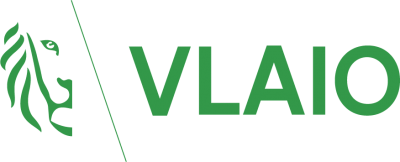Topics
We organise our actions in six thematic & strategic agendas:
Strategic Agendas:
Bio-economy
Circular Construction
Chemicals/Plastics
Manufacturing Industry
Food Chain
Water Cycles
Seven leverages provide additional support:
Leverage effects:
Lever Policy Instruments
Lever Circular Procurement
Lever Communication
Lever Innovation & Entrepreneurship
Lever Financing
Lever Jobs & Skills
Lever Research
What, why and how?
Why are we pursuing a circular economy?
Future visions 2050
How do we see our circular future?
About our management
Who steers what at Flanders Circular?
Terroir
Holistic approach to surplus food
It is time for the linear food chain to make way for a circular food chain, where consumers and producers once again communicate with each other and feel responsible for each other. This will lead to greater ecological resilience, greater social acceptance, the restoration of cycles and better food quality. All this will also mean less food waste in the local economy and protection of the environment.
With Terroir, we want to reinforce the link between the population and the food produced in Flanders. We want to reawaken people's interest in a cuisine based on local and seasonal products. We take food production out of its anonymity and give it a face and a story again. Moreover, with this project we want to make the general public aware of the current food wastage and show that surpluses and residual flows can also be processed into original and high-quality food.
Eatmosphere
Partners Proef (Air castles MW)
Sectors
Themes
Organisations
Website
MOST IMPORTANT
RESULTS
- We developed a website where food historians, chefs and local producers speak out, each with their own view and story about our terroir. It is an awareness-raising platform that reignites interest in our local, seasonal food production among the general public.
- Via a Foodlab, we made 16 prototypes of food surpluses, including miso, shrimp powder, kombucha, apple cider vinegar, kraut-chi, beer-barrel crackers, etc.
- In order to put a researched product in the spotlight, we organised an event with a top chef, e.g. Radu Iliescu, Sebastian Sandor, Damien Brunet, Maarten Van Essche, Yannick Van Aeken ...
- Through this project we created a real community centre around food that brings many different actors together. (Top) chefs, producers, farmers, journalists, food companies, the general public ... are included in the story through lectures, events, workshops, a pop-up restaurant ...
MOST IMPORTANT
LESSONS LEARNED
- By reconnecting with our local producers, we support more sustainable production, which has positive effects on our biodiversity, health and local economy. However, the story needs to be carried by different actors to have an impact on a large scale. This sometimes comes at a high (hidden) cost. But from the circular point of view, it is only win-win.
- In order to grow our project and create a trend, we needed pioneers whom we had to convince with a strong innovative and visual concept. We spent a lot of time on this. The innovative side of the project did not make it easy visually and content-wise either.
- We had to rethink our marketing strategy along the way. The events and the research did not bring in enough money to remain self-sufficient in the future. Our focus is now more on (international) consultancy for commercial kitchens, food companies, events ... We see this as a normal evolution: after an initial focus on visibility, it is time for a strategy with both financial and ecological impact.
WHAT DOES
THE FUTURE HOLD?
In the coming months, we will continue to focus on developing our new marketing strategy: consultancy to large food companies, caterers and cities. This way, we can have a greater impact, both financially and in terms of sustainability.
Furthermore, we will take a new path in food recuperation: where we used to recuperate everywhere, we will now work more locally and only donate seasonal vegetables, which will ensure a better taste and quality. In our pop-up restaurant, these local (sometimes forgotten) vegetables and old preparations will be given a new look.
Finally, we are also going to focus on the story of local farmers through a social media campaign.
















